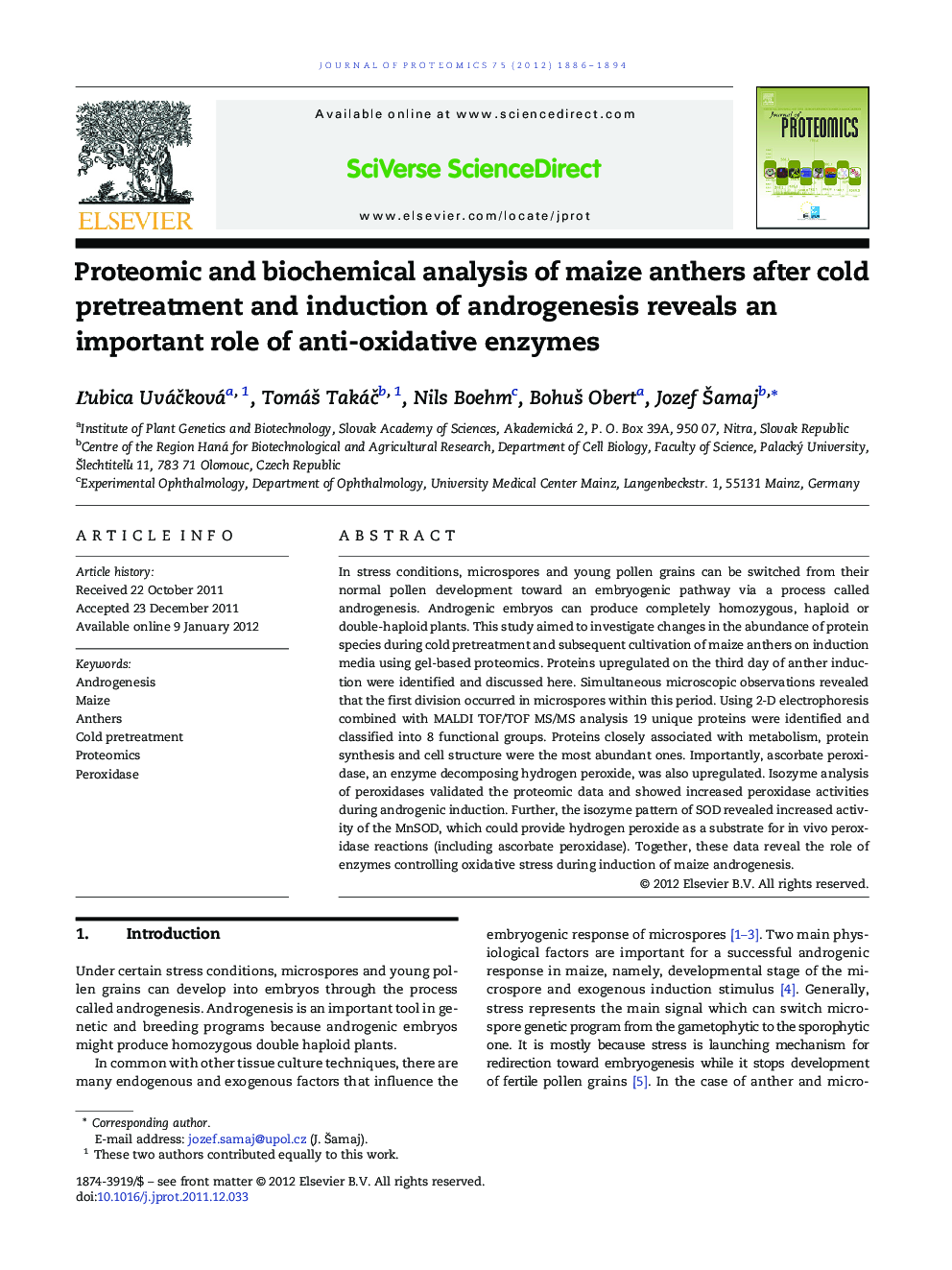| Article ID | Journal | Published Year | Pages | File Type |
|---|---|---|---|---|
| 1225349 | Journal of Proteomics | 2012 | 9 Pages |
In stress conditions, microspores and young pollen grains can be switched from their normal pollen development toward an embryogenic pathway via a process called androgenesis. Androgenic embryos can produce completely homozygous, haploid or double-haploid plants. This study aimed to investigate changes in the abundance of protein species during cold pretreatment and subsequent cultivation of maize anthers on induction media using gel-based proteomics. Proteins upregulated on the third day of anther induction were identified and discussed here. Simultaneous microscopic observations revealed that the first division occurred in microspores within this period. Using 2-D electrophoresis combined with MALDI TOF/TOF MS/MS analysis 19 unique proteins were identified and classified into 8 functional groups. Proteins closely associated with metabolism, protein synthesis and cell structure were the most abundant ones. Importantly, ascorbate peroxidase, an enzyme decomposing hydrogen peroxide, was also upregulated. Isozyme analysis of peroxidases validated the proteomic data and showed increased peroxidase activities during androgenic induction. Further, the isozyme pattern of SOD revealed increased activity of the MnSOD, which could provide hydrogen peroxide as a substrate for in vivo peroxidase reactions (including ascorbate peroxidase). Together, these data reveal the role of enzymes controlling oxidative stress during induction of maize androgenesis.
Graphical abstractFigure optionsDownload full-size imageDownload high-quality image (47 K)Download as PowerPoint slideHighlights► We investigated changes in protein abundances during maize androgenesis using gel-based proteomics. ► Ascorbate peroxidase, an enzyme decomposing hydrogen peroxide, was upregulated. ► MnSOD likely provides hydrogen peroxide as a substrate for in vivo peroxidase reactions. ► These data reveal the role of oxidative stress enzymes during induction of maize androgenesis.
